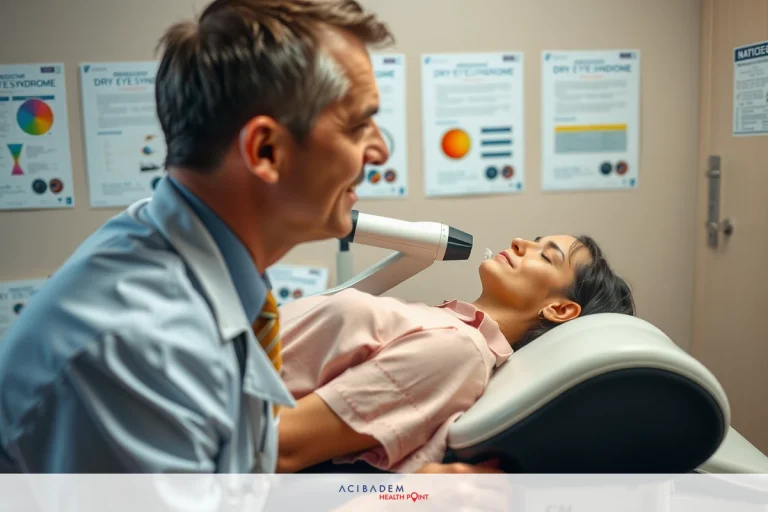What is the Success Rate of LASIK Eye Surgery?
What is the Success Rate of LASIK Eye Surgery? LASIK eye surgery has piqued interest due to its high success rates. This form of refractive surgery utilizes laser technology for precision and accuracy leading to improved visual acuity. The question remains though – just how successful is it?
Various factors come into play when determining the success rate of this procedure. These range from individual health considerations, technological advancements in ophthalmology, and even the skill and experience of the surgeon performing the operation. Understanding these elements gives us insight into why LASIK eye surgery may have diverse results across different individuals.
Outcomes post-surgery are also a point of intrigue with patients often reporting noticeable improvements in their vision quality after recovery. However, as with any medical treatment, outcomes can vary based on each person’s unique circumstances.
What is LASIK Eye Surgery?
LASIK eye surgery is a modern solution to rectify common vision problems. The technique employs lasers to reshape the cornea – the clear front part of your eye – thereby enabling light entering the eye to be properly focused onto the retina leading to clearer vision. This surgical procedure primarily assists in correcting refractive errors including myopia (nearsightedness), hyperopia (farsightedness), and astigmatism.
In order to understand how this operation can improve one’s visual acuity, it’s essential we delve into its mechanics. The process begins with an initial consultation where an ophthalmologist evaluates if you’re a suitable candidate by assessing your general health condition, ocular health history and current prescription strength amongst other variables. Once deemed fit for surgery, patients undergo a painless procedure lasting about 10 minutes per eye under local anesthesia ensuring comfort throughout.
The actual surgery involves creating a thin flap on the surface of the cornea using a femtosecond laser or microkeratome blade; this gives access to underlying corneal tissue which is then reshaped with another laser called an excimer laser that removes precise amounts of tissue based on each patient’s unique prescription. Following this resculpting phase, the superficial flap is repositioned back smoothly without requiring any sutures due its natural adhesive property resulting in minimal recovery time.
Such advanced technology coupled with experienced surgeons have led LASIK eye surgery towards high success rates globally contributing significantly towards its growing popularity as more people seek solutions for perfect vision sans glasses or contact lenses.
Factors Affecting Success Rate
As with any medical procedure, the success rate of LASIK eye surgery is not a guaranteed constant. It fluctuates depending on an assortment of factors that influence the final outcome and effectiveness of this vision correction treatment. To better comprehend these influences, we can categorize them into three primary groups: patient-related factors, surgical parameters, and post-operative care.
- Patient-Related Factors: This category encompasses elements such as age, general health condition and specific ocular parameters like corneal thickness or pupil size which differ from individual to individual. For instance, people over 40 may experience presbyopia (age-related farsightedness) reducing their chances for optimal results.
- Pre-existing Eye Conditions: Conditions such as dry eyes or severe myopia might limit the effectiveness of the surgery or even exclude some patients from being suitable candidates in order to prevent potential complications post-surgery.

A dental office environment where a dentist, identifiable by his lab coat and stethoscope, is examining a patient’s mouth. The patient is seated on an adjustable chair with head support, and the dentist is using a handheld mirror to inspect the teeth. Papers are posted around the room for educational purposes or patient information. - Surgeon’s Skills and Experience: The proficiency and expertise of your surgeon play a critical role in determining the success rate; experienced surgeons are more adept at handling complex cases ensuring higher efficacy rates.
- Surgical Equipment and Technology: Use of state-of-the-art technology aids precision during surgery enhancing its overall success rate by reducing room for errors; clinics equipped with advanced lasers provide superior outcomes compared to older methods.
- Post-operative Care: Post-surgery instructions including usage of prescribed eye drops or avoiding certain activities like swimming can significantly impact healing process thereby affecting long-term results following LASIK eye surgery.
Understanding these factors brings clarity about why some patients achieve perfect vision while others might need further enhancements post-LASIK – underlining how every person’s journey towards crystal clear sight is unique.
Expected Outcomes and Results
Once the LASIK eye surgery is complete, patients typically experience improved vision almost immediately or by the day after. However, it’s important to note that final results might take a few weeks up to several months to stabilize as your eyes adjust post-surgery. During this period of healing, some fluctuation in vision clarity can be expected although most people report significant improvements in their visual acuity within the first few days.
The primary aim of LASIK eye surgery is to reduce dependency on glasses or contact lenses with many achieving 20/20 vision or better post-procedure; however, individual outcomes can vary based on factors discussed earlier like age or pre-existing conditions. Some may still need glasses for certain activities requiring precise focus such as reading small print or driving at night but overall reliance on optical aids reduces considerably for majority of the patients improving their quality of life.
In terms of side effects following LASIK eye surgery, these are generally temporary and subside within three to six months; common ones being dry eyes which can be managed with lubricating drops prescribed by your surgeon, light sensitivity which gradually eases off over time and halos around lights at night that usually disappear once your eyes heal completely. Though rare cases might require an enhancement procedure if initial results aren’t satisfactory – rest assured knowing that patient satisfaction rates remain consistently high globally owing largely due its beneficial outcomes outweighing potential short-term discomforts.
Frequently Asked Questions
How long does the LASIK eye surgery procedure take?
The actual laser treatment takes approximately 10 minutes per eye. However, patients should plan to be at the clinic for about two hours on their surgery day to accommodate pre-surgery preparations and post-operative instructions.
Can I completely stop using glasses or contact lenses after LASIK?
While many people achieve 20/20 vision or better following LASIK, some may still need glasses for certain tasks such as reading small print or driving at night. However, overall dependency on optical aids significantly reduces improving individuals' quality of life.
Are there any side effects associated with this surgery?
Yes, common temporary side effects include dry eyes and light sensitivity which usually subside within three to six months post-procedure. In rare cases where initial results are not satisfactory, an enhancement procedure might be considered.
What factors influence whether I am a good candidate for LASIK eye surgery?
Factors that determine your suitability include age (must be over 18), stable prescription for at least one year prior to surgery date, corneal thickness amongst others; your surgeon will carry out a comprehensive evaluation during initial consultation before proceeding with the operation.








